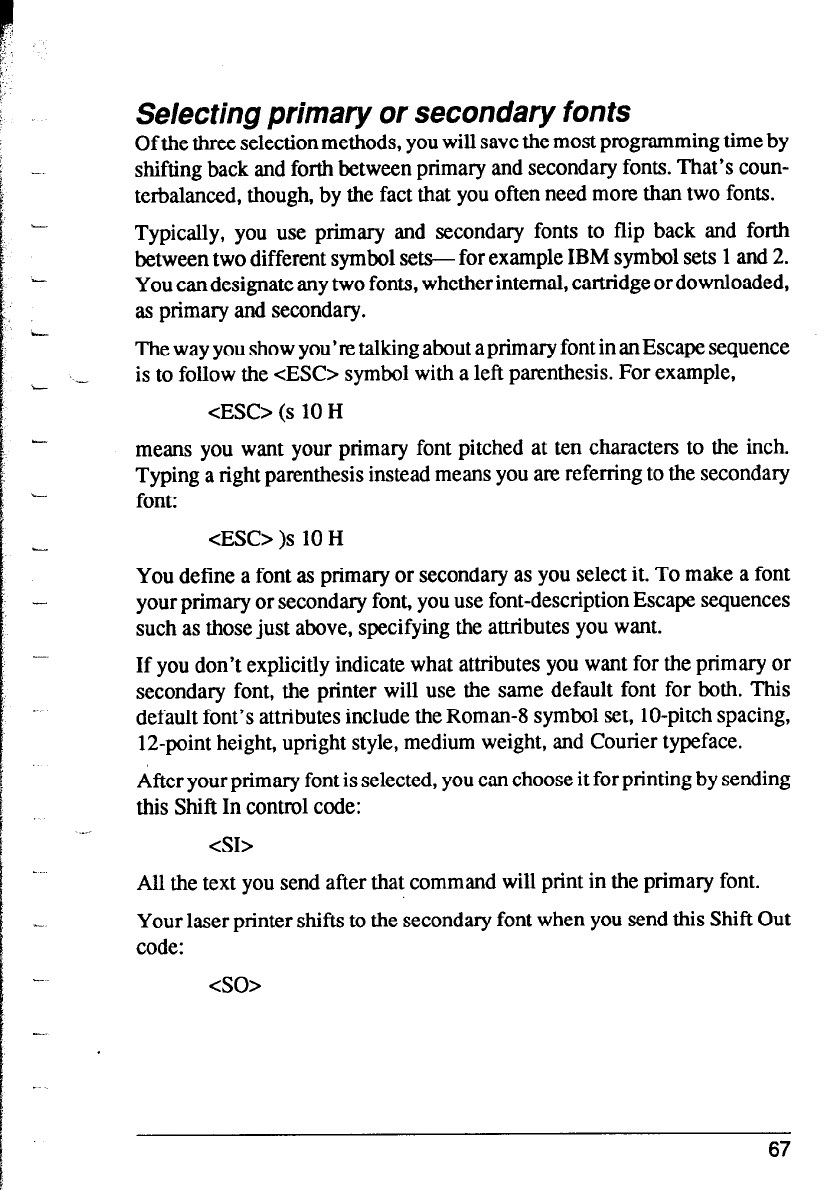
F
:::
.:,
p .,
I’
;,
):
\
.
-_
b-.
-.
Selecting primary or secondary fonts
Of the three selection methods, you will save the most programming time by
shifting back and forth between primary and secondary fonts. That’s coun-
terbalanced, though, by the fact that you often need mote than two fonts.
Typically, you use primary and secondary fonts to flip back and forth
between two different symbol sets- for example IBM symbol sets 1 and 2.
You can designate any two fonts, whether internal, cartridge or downloaded,
as primary and secondary.
The way you show you’re talking about a primary font in an Escape sequence
is to follow the <ES0 symbol with a left parenthesis. For example,
<ES0 (s 10 H
means you want your primary font pitched at ten characters to the inch.
Typing a right parenthesis instead means you are referring to the secondary
font:
cESC> )s 10 H
You define a font as primary or secondary as you select it. To make a font
your primary or secondary font, you use font-description Escape sequences
such as those just above, specifying the attributes you want.
If you don’t explicitly indicate what attributes you want for the primary or
secondary font, the printer will use the same default font for both. This
default font’s attributes include the Roman-8 symbol set, lo-pitch spacing,
12-point height, upright style, medium weight, and Courier typeface.
After your primary font is selected, you can choose it for printing by sending
this Shift In control code:
<SI>
All the text you send after that command will print in the primary font.
Your laser printer shifts to the secondary font when you send this Shift Out
code:
<so>
67


















